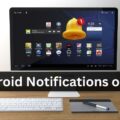Congratulations on developing an Android app! The hard part is over, but now you need to get people to use it. To do that, you need a marketing strategy. In this article, we’ll show you some ways to promote your app and get more downloads.
There are millions of apps in the Google Play Store, so it’s hard to stand out. That’s where marketing comes in. Marketing is about getting people to know about your app and want to use it. There are many different ways to market your app, and we’ll cover some of the best ones below.
No matter how experienced you are as an app developer, you need a marketing plan. In the next few sections, we’ll show you some proven marketing strategies that can help you promote your app and make it a success.
Defining Your Target Audience
One of the most important steps in marketing your Android app is identifying your target audience. Your target audience is the group of people who are most likely to use and benefit from your app. Defining your target audience will help you tailor your marketing efforts and reach the right people.
When defining your target audience, consider the following:
- Demographics: What is the age, gender, location, education level, and income of your target audience? Understanding these details will help you create marketing messages that resonate with your audience.
- Interests: What are the interests, hobbies, and behaviors of your target audience? Knowing this information will help you identify where your audience spends their time online and how to reach them.
- Needs and Pain Points: What problems does your app solve? What needs does it fulfill? Understanding your audience’s needs and pain points will help you create messaging that speaks directly to them.
Once you’ve identified your target audience, you can create a buyer persona, which is a fictional representation of your ideal customer. This persona should include details such as age, gender, job title, income, interests, and pain points. Creating a buyer persona will help you create marketing messages that resonate with your audience and make them feel like your app was made just for them.
Remember, defining your target audience is an ongoing process. As your app evolves and your audience changes, you may need to adjust your target audience and buyer persona. Regularly reviewing and updating your target audience will help ensure that your marketing efforts remain effective and relevant.
Optimizing Your App Store Listing
When it comes to marketing your Android app, optimizing your app store listing is a crucial step in increasing visibility and attracting potential users. App Store Optimization (ASO) is the process of optimizing your app’s listing to rank higher in the search results of the app store. The higher your app ranks, the more visible it is to potential users.
To optimize your app store listing, start by choosing the right keywords. These are the words that users are most likely to search for when looking for an app like yours. Use tools like Google Keyword Planner or App Annie to research keywords and choose ones that have a high search volume and low competition.
Next, focus on your app’s title and description. Your title should be short, catchy, and include your most important keywords. Your description should be informative and highlight the key features and benefits of your app. Use bullet points, tables, and other HTML tags to make it easy to read and understand.
Another important aspect of your app store listing is your app’s icon and screenshots. Your icon should be eye-catching and relevant to your app’s purpose. Your screenshots should showcase your app’s features and benefits and include captions or annotations to highlight important information. Also, you can provide voice command feature in your app to attract more customer.
Finally, make sure to regularly update your app store listing with new keywords, screenshots, and descriptions. This will help keep your app relevant and increase visibility in the app store search results.
Leveraging Social Media
Social media platforms have become an essential tool for promoting your Android app. With billions of active users, social media provides an excellent opportunity to reach out to your target audience and create a buzz around your app.
Here are some tips on how to leverage social media to market your Android app:
- Choose the right platform: Not all social media platforms are created equal. You need to choose the platform that is most relevant to your target audience. For example, if your app is aimed at teenagers, then you should focus on platforms like Snapchat and TikTok. If your app is aimed at professionals, then LinkedIn might be a better option.
- Create engaging content: Social media is all about engagement. You need to create content that is interesting, informative, and relevant to your target audience. This could be in the form of blog posts, videos, infographics, or images. The key is to create content that is shareable and will help spread the word about your app.
- Use hashtags: Hashtags are a great way to make your content more discoverable on social media. Make sure to use relevant hashtags that are related to your app and target audience. You can also create your own branded hashtags to help build a community around your app.
- Engage with your audience: Social media is a two-way conversation. You need to engage with your audience by responding to comments, answering questions, and addressing concerns. This will help build trust and establish a relationship with your audience.
- Run social media ads: Social media ads can be a great way to reach a wider audience and drive downloads for your app. You can target your ads based on demographics, interests, and behaviors to ensure that the right people see them.
By leveraging social media, you can create a strong online presence for your Android app and reach out to your target audience. Remember to choose the right platform, create engaging content, use hashtags, engage with your audience, and run social media ads to maximize your reach and drive downloads for your app.
You might be interested in How to Receive Android Phone Notifications on Your PC.
Implementing App Store Optimization (ASO)
If you want to make your Android app more visible and increase its downloads, you need to implement App Store Optimization (ASO). ASO is the process of improving the visibility and appeal of your app in app stores, such as the Google Play Store. It involves optimizing your app’s title, description, keywords, and other elements to make it more discoverable and appealing to potential users.
Here are some tips for implementing ASO:
- Choose the right keywords: Research and choose relevant, high-traffic keywords that your target audience is likely to use when searching for apps like yours. Incorporate these keywords into your app’s title, description, and tags.
- Write a compelling description: Your app’s description should be clear, concise, and persuasive. Highlight the benefits and features of your app, and use bullet points and other formatting to make it easy to read.
- Use eye-catching visuals: Your app’s icon and screenshots should be visually appealing and accurately represent your app’s features and functionality. Use high-quality images and consider including captions or annotations to highlight key features.
- Encourage user reviews: Positive user reviews can help boost your app’s visibility and credibility. Encourage users to leave reviews by prompting them within the app or offering incentives.
By implementing these ASO strategies, you can improve your app’s visibility, attract more users, and increase downloads. Keep in mind that ASO is an ongoing process, and you may need to continually adjust and optimize your app’s elements to stay ahead of the competition and meet the evolving needs of your target audience.
Incorporating Influencer Marketing
Influencer marketing can help you promote your Android app to a wider audience. Here are some tips to get you started:
- Identify the right influencers. Choose influencers who have an audience that matches your app’s target market. Look for influencers with a large following on social media platforms like Instagram, Twitter, or YouTube. You can use tools like BuzzSumo or HypeAuditor to find the right influencers for your campaign.
- Develop a strategy. Before launching your influencer marketing campaign, create a clear plan that outlines your goals, target audience, and budget. Decide on the type of content you want influencers to create, such as sponsored posts, reviews, or demos, and establish guidelines for how the content should be shared.
- Provide incentives. To motivate influencers to promote your app, offer them incentives like free access to your app, exclusive discounts, or monetary compensation. Make sure the incentives are attractive enough to encourage influencers to create high-quality content that resonates with their audience.
- Track your results. Keep track of your influencer marketing campaign’s performance by monitoring metrics like engagement rates, click-through rates, and downloads. Use this data to evaluate the effectiveness of your campaign and make adjustments as needed.
Influencer marketing can be a powerful way to increase your app’s visibility and attract new users. By following these tips, you can create a successful influencer marketing campaign that helps you achieve your marketing goals.
Engaging in Paid Advertising
If you want to reach a wider audience and attract more users to your Android app, paid advertising can be a powerful tool. By investing in ads on social media platforms like Facebook and Twitter, as well as using Google Search ads, you can increase your visibility and drive more downloads.
When creating your ads, it’s important to consider your target audience and tailor your messaging accordingly. Use eye-catching visuals and compelling copy to grab users’ attention and encourage them to click through to your app’s landing page. Make sure your ads are optimized for mobile devices, as most users will be viewing them on their smartphones or tablets.
One effective strategy for paid advertising is to use retargeting ads. These ads target users who have already shown an interest in your app, such as by visiting your website or downloading a previous version of your app. By retargeting these users with relevant ads, you can increase the likelihood that they will download your app and become loyal users.
Another option is to use influencer marketing to promote your app. This involves partnering with social media influencers who have a large following in your app’s niche. By leveraging their influence, you can reach a wider audience and generate buzz around your app. Just make sure to choose influencers who are a good fit for your brand and who have a genuine interest in your app.
Overall, paid advertising can be a powerful tool for promoting your Android app and attracting new users. By creating targeted ads that resonate with your audience and leveraging retargeting and influencer marketing, you can drive more downloads and grow your user base.
Monitoring and Analyzing Performance
After launching your app, it is essential to monitor and analyze its performance to ensure that it meets your expectations and user needs. Monitoring and analyzing performance can help you identify issues and areas for improvement, ultimately leading to a better user experience and increased downloads.
Several tools and techniques are available to monitor and analyze your app’s performance. One of the most popular methods is using app analytics tools. These tools provide you with analytical data on your app’s marketing performance, such as how changes to your target keywords, metadata, and other integral parts of your app marketing campaign influence your visibility and performance in the app store.
Some of the top app analytics tools include:
- Google Analytics for Mobile Apps
- Flurry Analytics
- App Annie
- Adjust
Another useful technique for monitoring and analyzing app performance is using heatmaps. Heatmaps provide you with a visual representation of where users are clicking and spending the most time within your app. This information can help you identify areas of your app that may need improvement or optimization.
Finally, it is important to continuously monitor your app’s performance using performance monitoring tools. These tools can help you identify issues such as crashes, slow loading times, and other performance-related problems. Some of the top performance monitoring tools include:
- AppDynamics
- New Relic
- Crashlytics
- Sentry
By monitoring and analyzing your app’s performance using these tools and techniques, you can identify areas for improvement and ensure that your app is meeting your expectations and user needs.













